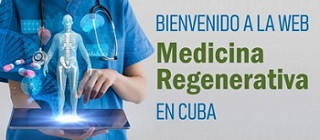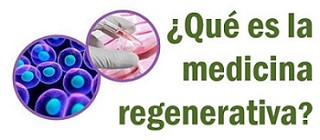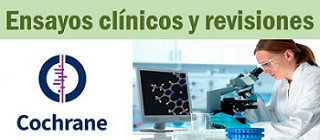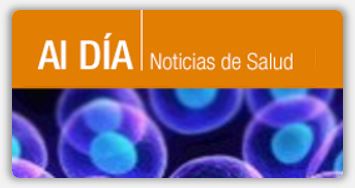Novel application of stem cell-derived factors for periodontal regeneration.
Inukai T, Katagiri W, Yoshimi R, Osugi M, Kawai T, Hibi H, Ueda M.
Source
Department of Oral and Maxillofacial Surgery, Nagoya University Graduate, School of Medicine. Electronic address: t-inukai@med.nagoya-u.ac.jp.
Abstract
The effect of conditioned medium from cultured mesenchymal stem cells (MSC-CM) on periodontal regeneration was evaluated. In vitro, MSC-CM stimulated migration and proliferation of dog MSCs (dMSCs) and dog periodontal ligament cells (dPDLCs). Cytokines such as insulin-like growth factor, vascular endothelial growth factor, transforming growth factor-β1, and hepatocyte growth factor were detected in MSC-CM. Ver más…
Nat Immunol. 2012 Nov;13(11):1072-82. doi: 10.1038/ni.2408. Epub 2012 Sep 16.
Monocytes-macrophages that express α-smooth muscle actin preserve primitive hematopoietic cells in the bone marrow.
Ludin A, Itkin T, Gur-Cohen S, Mildner A, Shezen E, Golan K, Kollet O, Kalinkovich A, Porat Z, D’Uva G, Schajnovitz A, Voronov E, Brenner DA, Apte RN, Jung S, Lapidot T.
SourceDepartment of Immunology, Weizmann Institute of Science, Rehovot, Israel.
Abstract
Hematopoietic stem and progenitor cells (HSPCs) are regulated by various bone marrow stromal cell types. Here we identified rare activated bone marrow monocytes and macrophages with high expression of α-smooth muscle actin (α-SMA) and the cyclooxygenase COX-2 that were adjacent to primitive HSPCs. These myeloid cells resisted radiation-induced cell death and further upregulated COX-2 expression under stress conditions. COX-2-derived prostaglandin E(2) (PGE(2)) prevented HSPC exhaustion by limiting the production of reactive oxygen species (ROS) via inhibition of the kinase Akt and higher stromal-cell expression of the chemokine CXCL12, which is essential for stem-cell quiescence. Our study identifies a previously unknown subset of α-SMA(+) activated monocytes and macrophages that maintain HSPCs and protect them from exhaustion during alarm situations
Emerging Stem Cell Therapies: Treatment, Safety, and Biology
Joel Sng and Thomas Lufkin
Stem Cell and Developmental Biology, Genome Institute of Singapore, 60 Biopolis Street, 138672, Singapore
Abstract
Stem cells are the fundamental building blocks of life and contribute to the genesis and development of all higher organisms. The discovery of adult stem cells has led to an ongoing revolution of therapeutic and regenerative medicine and the proposal of novel therapies for previously terminal conditions. Hematopoietic stem cell transplantation was the first example of a successful stem cell therapy and is widely utilized for treating various diseases including adult T-cell leukemia-lymphoma and multiple myeloma. The autologous transplantation of mesenchymal stem cells is increasingly employed to catalyze the repair of mesenchymal tissue and others, including the lung and heart, and utilized in treating various conditions such as stroke, multiple sclerosis, and diabetes. There is also increasing interest in the therapeutic potential of other adult stem cells such as neural, mammary, intestinal, inner ear, and testicular stem cells. The discovery of induced pluripotent stem cells has led to an improved understanding of the underlying epigenetic keys of pluripotency and carcinogenesis. More in-depth studies of these epigenetic differences and the physiological changes that they effect will lead to the design of safer and more targeted therapies.
Acceso en http://www.hindawi.com/journals/sci/2012/521343/
State of the Art in Stem Cell Research: Human Embryonic Stem Cells, Induced Pluripotent Stem Cells, and Transdifferentiation.
Volume 2012 (2012), Article ID 317632, 10 pagesdoi:10.1155/2012/317632
Giuseppe Maria de Peppo and Darja Marolt
Abstract
Stem cells divide by asymmetric division and display different degrees of potency, or ability to differentiate into various specialized cell types. Owing to their unique regenerative capacity, stem cells have generated great enthusiasm worldwide and represent an invaluable tool with unprecedented potential for biomedical research and therapeutic applications. Stem cells play a central role in the understanding of molecular mechanisms regulating tissue development and regeneration in normal and pathological conditions and open large possibilities for the discovery of innovative pharmaceuticals to treat the most devastating diseases of our time. Not least, their intrinsic characteristics allow the engineering of functional tissues for replacement therapies that promise to revolutionize the medical practice in the near future. In this paper, the authors present the characteristics of pluripotent stem cells and new developments of transdifferentiation technologies and explore some of the biomedical applications that this emerging technology is expected to empower
Volume 11, Issue 2, 3 August 2012, Pages 145–146
Stem Cell Opponents? Give Me Your Best Charles Sabine1, ,
1 Field Cottage, 9 Mays Lane, Avening, Tetbury, Gloucestershire, GL8 8NX, UK
Available online 2 August 2012
http://dx.doi.org/10.1016/j.stem.2012.07.011, How to Cite or Link Using DOIPermissions & Reprints
Main Text
For generations, families like mine have had to suffer a total absence of treatments for the devastating effects of Huntington’s disease (HD). But an unprecedented collaboration across scientific fields has now brought the first real hope of therapies in the future.
These approaches involve pluripotent stem cell technology on two fronts: ongoing work using human embryonic stem cell based transplantation is showing highly promising results, raising hopes that that these types of approaches could provide delay in disease onset and progression (e.g., Ma et al., 2012); and human iPSCs differentiated into neurons and other brain cells, used to study the disease, to confirm current HD cell therapies, for drug screens, and for, potentially, transplantation, are presenting evidence that they could lead to new therapeutic targets and drug candidates (e.g., An et al., 2012; The HD iPSC Consortium, 2012; Perrier and Peschanski, 2012). Other strategies involving different types of stem cells, particularly neural stem cells, or even activation of endogenous stem cells, have also been encouraging (Benraiss and Goldman, 2011).
But still dogma threatens these green shoots just as HD families have begun to dare to hope. Members of the European Parliament are under immense pressure from Catholic organizations to exclude embryonic stem cells from Horizon 2020, its program for research and innovation for the next 6 years. In addition to the disastrous effect of such a vote on direct funding, the pressure of the “anti” groups continues to cause wider fallout. Despite the targeting of embryonic stem cells, all stem cell research becomes tarred with the same brush, and opponents seem strangely happy to leave waters muddied. Investors, academic institutions, and other parliaments, preferring to stay away from contentious matters in times of recession, will often be more inclined to follow public opinion that they suspect may be flawed than attempt to reeducate.
The most effective argument of the opponents’ lies not in any interpretation of religious texts, but in the relativity of medical research. All medical advances are relative anyway; there will always be people made miserable by disease. Scientific progress merely moves the goal posts of what those ailments are. Plague Tuberculosis? HIV/AIDS? Multiple Sclerosis? Pick your century.
In short, opponents might argue, “Why not save resources for those we know we can help, and let God, or natural selection, sort the rest out, rather than chasing the unobtainable (and probably undesirable) dream of neverending life for the sake of scientists’ egos?”
My reply to this “best shot” refers to a powerful human trait that I was privileged to witness in my career as a TV news correspondent, but which the opponents seem blind to: the instinctive desire and need for human beings to want to look after, or improve the health of, those who are sick.
If the Nazis had won the Second World War, I would very likely not be typing these words, because they advocated (and effectively practiced) euthanasia for people with my disease. A 1938 Nazi poster promoting the compulsory euthanasia program pictures a doctor standing next to a patient with HD, and the words, “This person suffering from hereditary defects costs the community 60,000 Reichsmark during his lifetime. Fellow Germans, that is your money, too.”
But this eugenic interpretation of Darwin’s theories would have depressed him greatly, because he was very clear on this issue: the “balance of dependency is part of our social axis,” allowing the growth of the “instinct of sympathy,” which he called “the noblest part of our nature” (Darwin, 1871).
HD has challenged the human spirit because it has sucked hope into a vortex. But it has never defeated that spirit, because the very best of humanity surrounds it. The tireless patience of the caregivers, and the extraordinary devotion from the scientists and clinicians—these are the battlefields on which the greatest qualities of the human spirit shine brightest, and in doing so, give us all a reason to exist. The right to care for the infirm and strive to make them better is no less sacred than the right to bear children. No person, or organization, can keep any moral high ground if they stand in the way of those who might offer better quality of life.
I ask those who refer to a “monstrous attack on human rights” through stem cell research’s “evil” endorsement of “Frankenstein” experiments (O’Brien, 2008) to have the courage of their convictions to discuss with me on a public platform what truly constitute relevant “human rights” and the “dignity of man” in this issue, someone who has seen his father’s pride destroyed, and who not only faces an equally terrible future, but has to brace the next generation for the same fate too.
The act of witnessing more than a dozen wars, five revolutions, four earthquakes, and more suicide bombings than I can count has left me with a stark lesson about mankind: human beings lose their moral compass—their social equilibrium—when you take two things away from them: dignity and hope.
The vacuum of dignity wrought by HD upon my father was no more or less vividly exhibited than in any other sufferer of the disease. He was a once proud soldier who had to watch friends and family wince as his body and mind became twisted until unrecognizable; my mother broke both of her wrists lifting him out of baths, before he finally found death a blessed relief from a tube down his throat acting for his stomach.
And what about hope? Do we HD families have that?
The answer to that question lies in the hands of not only the researchers who are the custodians of new science, but also the legislatures, executives, and churches that will dictate how our societies treat the infirm in the 21st century. Neither group should underestimate what research means to the families around the world who suffer from untreatable diseases, as we scour the media for any fragment of news from laboratories. In a world of total darkness, the very faintest glimmer of light emboldens the human spirit to go on.
We in the communities of families suffering so far untreatable diseases owe a debt of gratitude to all those who have had the courage to not bend in the face of dogma, and we appreciate that they should feel very proud of pushing the frontiers of medical understanding. It may be too late for me, but on behalf of the next generation to face HD, those who have yet to be born, and those whose lot it shall be to care for them; I say: thank you.
References
An et al., 2012M.C. An, N. Zhang, G. Scott, D. Montoro, T. Wittkop, S. Mooney, S. Melov, L.M. Ellerby
Cell Stem Cell, 11 (2012), pp. 253–263 this issue
Benraiss and Goldman, 2011A. Benraiss, S.A. Goldman
Neurotherapeutics, 8 (2011), pp. 577–590
Darwin, 1871C. Darwin
The Descent of Man, and Selection in Relation to Sex
John Murray, London (1871)
Ma et al., 2012L. Ma, B. Hu, Y. Liu, S.C. Vermilyea, H. Liu, L. Gao, Y. Sun, X. Zhang, S.C. Zhang
Cell Stem Cell, 10 (2012), pp. 455–464
O’Brien, 2008O’Brien, K. 2008. Press release from Office of Cardinal of Scotland, in reference to the UK Human Fertilisation and Embryology Bill. http://www.scmo.org/articles/cardinal-attacks-human-fertilisation-and-embryology-bill.html.
Perrier and Peschanski, 2012A.L. Perrier, M. Peschanski
Cell Stem Cell, 11 (2012), pp. 153–161 this issue
The HD iPSC Consortium, 2012The HD iPSC Consortium
Cell Stem Cell, 11 (2012), pp. 264–278 this issue
Corresponding author
Copyright © 2012 Elsevier Inc. All rights reserved.
Although histone acetylation is critical for maintaining embryonic stem cell pluripotency, the molecular machinery involved remains poorly understood. Li et al. (2012) now show that Mof, a MYST family histone acetyltransferase, functions as a coactivator of Nanog-mediated transcription, maintains the expression of pluripotency-associated genes, and primes developmental genes for differentiation.
Mahendra Rao
The electronic version of this article is the complete one and can be found online at: http://stemcellres.com/content/3/4/27
Published: 9 July 2012
Abstract
The remarkable speed with which the field of stem cell biology has evolved is unprecedented and has already changed the way we do science. In this series of articles we have invited leading experts to present their efforts in moving from the bench to the bedside, with the hope that we can learn from the experiences of the pioneers.
Progress whether one likes it or not
The ability to make embryonic stem cells from human cells allowed us to examine early developmental events and study human disease with human models. In the short span of a decade, over 150 lines are now available in the embryonic stem cell registry maintained by the US government [1].
The remarkable discovery that an embryonic stem cell-like state can be induced in virtually every adult cell type changed the way we consider doing experiments. Ever since the remarkable discovery of induced pluripotent stem cells by Takahashi and Yamanaka [2], the field has continued to evolve – with exciting discoveries furthering our understanding of early development, the process of cellular reprogramming, acquisition and maintenance of pluripotency, the determination of cell fate, and enhancing our ability to model diseases in vitro [3]. These advances coupled with parallel advances in gene engineering and gene targeting have allowed for an unprecedented ability to manipulate, perturb and thereby understand human development [4,5].
The remarkable pace of development is reflected in the speed with which discoveries are moving from the bench to the bedside [6,7]. In just about a decade, two companies have obtained US Food and Drug Administration approval to conduct cell-based trials with human embryonic stem cell-derived cells, and a much larger number of trials have commenced with adult stem cells. Screening with primary cells derived from embryonic stem cells or induced pluripotent stem cells has begun, and several groups have described the generation of disease-specific or rescued lines and have shown that panels of lines can be generated [8].
We felt it was important to provide a common forum where such translational studies could be discussed in a single place. Stem Cell Research and Therapy therefore invited a series of articles that highlight the rapid pace of advance and illustrate the breadth and range of the efforts that are in progress.
In the present issue you will see three articles that showcase work being performed using stem cells as cell-based therapy. Gupta and colleagues describe the use of mesenchymal stem cells for cartilage repair [9], while Donnelly and colleagues describe their experience using human neural stem cells to treat spinal cord injury [10]. In the same issue, Bartel and colleagues describe their efforts to manufacture an autologous differentiated cell product for the treatment of critical limb ischemia [11].
We expect to continue this series over the coming months and will continue to showcase both the progress in and the challenges of reducing discoveries to practice and the innovative solutions that investigators have developed. Indeed, many challenges remain. These include issues related to cell manufacture, consent to obtain samples, and the difficulty in designing an appropriate business model to ensure that positive results become widely available and freely accessible.
I encourage our readers to send their comments and to participate in an active discussion and share the results in this forum. I hope these latest review and original research articles will stimulate further thoughts and provide novel solutions for the problems being encountered.
Note
This article is part of a thematic series on Clinical applications of stem cells edited by Mahendra Rao. Other articles in the series can be found online at http://stemcellres.com/series/clinical webcite
Competing interests
The author declares that they have no competing interests.
References
NIH Embryonic Stem Cell Registry [http://stemcells.nih.gov/research/registry/] webcite
Return to text
Takahashi K, Yamanaka S: Induction of pluripotent stem cells from mouse embryonic and adult fibroblast cultures by defined factors.
Cell 2006, 126:663-676. PubMed Abstract | Publisher Full Text
Return to text
Eisenstein M: IPSCs: one cell to rule them all?
Nat Methods 2010, 7:81-85. Publisher Full Text
Return to text
Capecchi MR: Gene targeting in mice: functional analysis of the mammalian genome for the twenty-first century.
Nat Rev Genet 2005, 6:507-512. PubMed Abstract | Publisher Full Text
Return to text
Porteus MH, Carroll D: Gene targeting using zinc finger nucleases.
Nat Biotechnol 2005, 23:967-973. PubMed Abstract | Publisher Full Text
Return to text
Carpenter MK, Frey-Vasconcells J, Rao MS: Developing safe therapies from human pluripotent stem cells.
Nat Biotechnol 2009, 27:606-613. PubMed Abstract | Publisher Full Text
Return to text
Rao MS: Funding translational work in cell-based therapy.
Cell Stem Cell 2011, 9:7-10. PubMed Abstract | Publisher Full Text
Return to text
Ebert AD, Liang P, Wu JC: Induced pluripotent stem cells as a disease modeling and drug screening platform.
J Cardiovasc Pharmacol 2012, in press. PubMed Abstract | Publisher Full Text
Return to text
Gupta PK, Das AK, Anoop CH, Majumdar AS: Mesenchymal stem cells for cartilage repair in osteoarthritis.
Stem Cell Res Ther 2012, 3:25. PubMed Abstract | BioMed Central Full Text
Return to text
Donnelly EM, Lamanna JJ, Boulis NM: Stem cell therapy for the spinal cord.
Stem Cell Res Ther 2012, 3:24. PubMed Abstract | BioMed Central Full Text
Return to text
Bartel R, Cramer C, Ledford K, Longcore A, Parrish C, Stern T, Watling S, Zeigler F: The Aastrom experience.
Stem Cell Res Ther 2012, 3:26. PubMed Abstract | .
George R Barclay, Olga Tura, Kay Samuel, Patrick WF Hadoke, Nicholas L Mills, David E Newby and Marc L Turner
Stem Cell Research & Therapy 2012, 3:23 doi:10.1186/scrt114
Published: 3 July 2012
Abstract (provisional)
Introduction
Endothelial progenitor cells (EPC) capable of initiating or augmenting vascular growth were recently identified within the small population of CD34-expressing cells that circulate in human peripheral blood and which are considered hematopoietic progenitor cells (HPC). Soon thereafter human HPC began to be used in clinical trials as putative sources of EPC for therapeutic vascular regeneration, especially in myocardial and critical limb ischemias. However, unlike HPC where hematopoietic efficacy is related quantitatively to CD34+ cell numbers implanted, there has been no consensus on how to measure EPC or how to assess cellular graft potency for vascular regeneration. We employed an animal model of spontaneous neovascularisation to simultaneously determine whether human cells incorporate into new vessels and to quantify the effect of different putative angiogenic cells on vascularisation in terms of number of vessels generated. We systematically compared competence for therapeutic angiogenesis in different sources of human cells with putative angiogenic potential, to begin to provide some rationale for optimising cell procurement for this therapy.
Methods
Human cells employed were mononuclear cells from normal peripheral blood and HPC-rich cell sources (umbilical cord blood, mobilised peripheral blood, bone marrow), CD34+ enriched or depleted subsets of these, and outgrowth cell populations from these. An established sponge implant angiogenesis model was adapted to determine the effects of different human cells on vascularisation of implants in immunodeficient mice. Angiogenesis was quantified by vessel density and species of origin by immunohistochemistry.
Results
CD34+ cells from mobilised peripheral blood or umbilical cord blood HPC were the only cells to promote new vessel growth, but did not incorporate into vessels. Only endothelial outgrowth cells (EOC) incorporated into vessels, but these did not promote vessel growth.
Conclusions
These studies indicate that, since EPC are very rare, any benefit seen in clinical trials of HPC in therapeutic vascular regeneration is predominantly mediated by indirect proangiogenic effects rather than through direct incorporation of any rare EPC contained within these sources. It should be possible to produce autologous EOC for therapeutic use, and evaluate the effect of EPC distinct from, or in synergy with, the proangiogenic effects of HPC therapies.
The complete article is available as a provisional PDF. The fully formatted PDF and HTML versions are in production.





